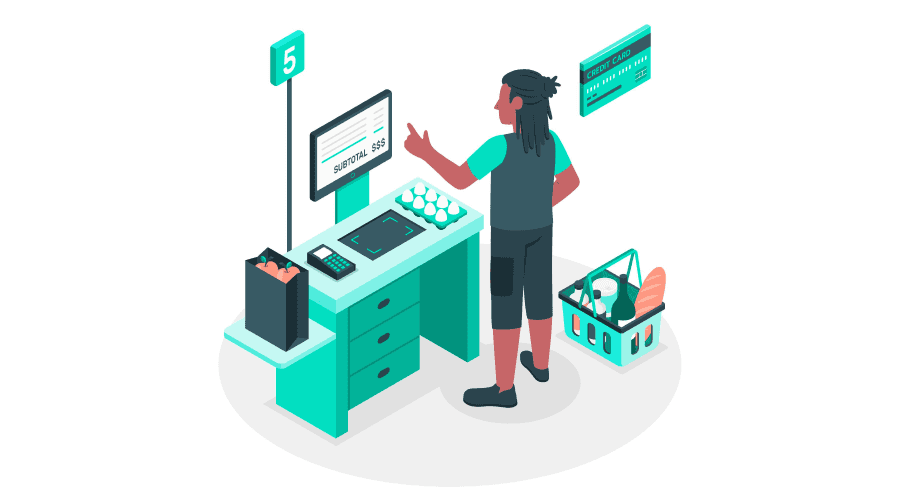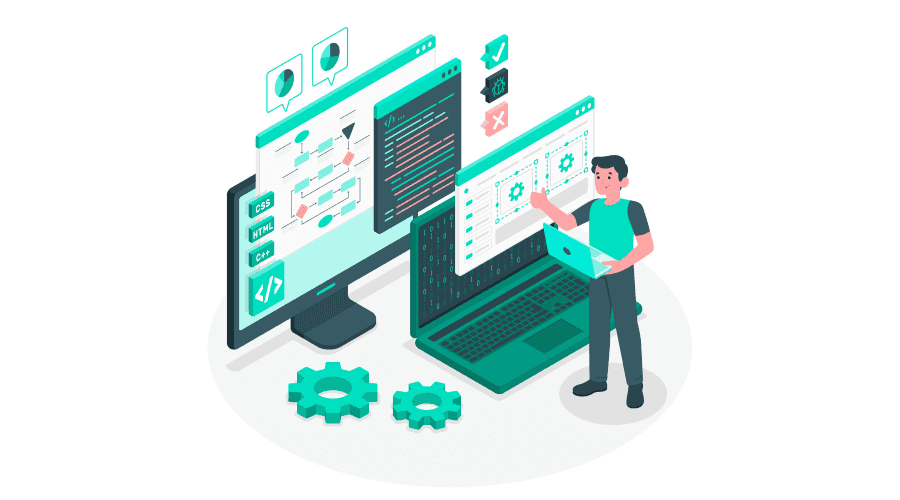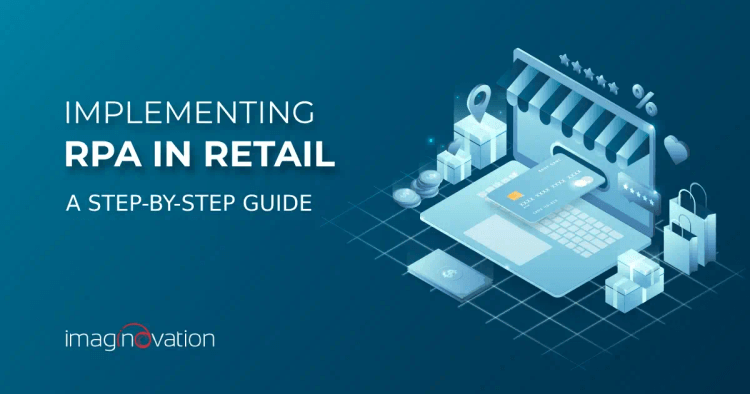Are you tired of the endless paperwork and mundane tasks that eat up your time in retail?
It's time for a transformation with Robotic Process Automation (RPA), which automates repetitive retail tasks!
Many companies rapidly adopt RPA, especially in their digital transformation journeys.
A survey revealed that 42% of digital transformation leaders are already using RPA, and 54% plan to invest in it.
From automating inventory management to order processing in retail, RPA can be a powerful tool to enhance your business efficiency. However, diving into it without proper understanding can lead to failure.
In this blog post, we'll explore use cases of RPA in retail and guide you through its implementation.
Let’s go!
Understanding RPA in Retail
What is RPA?
Imagine having an assistant who can do all the manual and repetitive tasks for you, like scheduling appointments, entering data, extracting information, publishing social media posts, generating reports, etc.,
That's exactly what Robotic Process Automation (RPA) can do for your business.
Simply put, "RPA is a technology that uses computer software with bots to mimic human actions and carry out tasks automatically."
By automating these repetitive tasks, RPA frees us to focus on more important and complex activities, like problem-solving and creativity.
What's unique about RPA? They never sleep, don't need an off day, make zero mistakes, and cost less than employees' salaries.
So, if you're tired of spending endless hours on mundane tasks, RPA is the solution that can make your work life easier.
RPA in Retail
In the context of the retail industry, RPA can automate many tasks, such as managing inventory, processing payments, processing orders, providing customer support, or tracking shipments.
For example, Robotic process automation in retail can automatically update inventory levels when items are sold, generate purchase orders when inventory runs low, and even handle returns and refunds.
Benefits of RPA in Retail
One of the most significant benefits of RPA in retail is that it improves accuracy and reduces errors. Inaccurate inventory levels, order processing mistakes, and delayed shipments can result in lost sales, unhappy customers, and even increased costs.
Additionally, RPA in retail helps retailers improve efficiency. The fast-paced retail industry requires quick order processing and product delivery. RPA can process large volumes of orders, update inventories, and generate reports within minutes, saving time and resources.
This increased efficiency helps retailers minimize costs associated with labor, manual data entry, and potential errors.
Moreover, RPA plays a crucial role in handling data in the retail industry. Retail outlets collect extensive customer and business data, which can be time-consuming for humans to gather and organize. Robotic process automation in retail streamlines the process by quickly transferring data from multiple sources to the ERP system, avoiding errors and enhancing efficiency.
By automating repetitive tasks, RPA frees retail employees to focus on delivering exceptional customer service. With more time and attention devoted to customers, employees can provide personalized assistance, address inquiries promptly, and create positive shopping experiences.
Automating tasks like managing inventory and processing orders helps retailers maintain accurate stock levels and fulfill customer orders swiftly and accurately. This improves the customer experience and boosts satisfaction.
Moreover, RPA in retail helps retailers ensure they follow regulations by automating tasks like data reporting and creating audit trails. This not only helps avoid costly penalties but also builds and maintains trust with customers.
Use Cases of Robotic Process Automation in Retail
RPA excels in automating tasks that are manual, repetitive, error-prone, or rely on volumes of data, offering limited opportunities for human intervention.
Here are some popular RPA use cases in the retail industry that exemplify this:
1. Automated Order Processing

Imagine a world where order processing in retail is smooth and hassle-free.
RPA tackles the key challenges of manual purchase order handling with automation, ensuring a seamless order-to-cash process.
RPA robots work efficiently, checking orders, extracting data, and verifying billing and delivery details within seconds. They also ensure there are no duplicate orders. If a duplicate slips through, the system flags it for manual resolution.
This transforms a task that would take around 15-20 minutes into a quick, accurate process done within seconds.
Bots effortlessly handle purchase orders, working in sync with e-commerce platforms to transfer order data directly to warehouse management systems.
Besides, intelligent chatbots powered by RPA do not need manual inputs; they keep customers informed 24/7.
No more errors or delays – RPA guarantees accuracy and accelerates the entire order processing cycle.
2. Automated Inventory Management
Handling inventory can be complex. It involves many time-consuming processes. Conventional inventory management software can only enhance productivity to a certain extent.
But RPA automation makes inventory management easy.
RPA automates inventory management tasks, such as tracking stock levels, updating inventory records, and generating replenishment orders. So, there is no need for manual data entry.
With robots at work, inventory levels can be monitored in real-time, gathering data from different sources and automatically triggering reordering when stock reaches a certain threshold. With this, you can say goodbye to stockouts.
Not only that, RPA transforms how you handle inventory discrepancies and demand forecasting.
You can schedule unattended bots to run daily. They can utilize sales data from each store to update records in inventory management systems like Square. Imagine these bots equipped with AI-processing functionality. They can notice when two slightly different names refer to the same product, eliminating transcription errors and boosting accuracy.
3. Automated Returns and Refunds Processing
In customer-focused retail, especially in e-commerce, tasks like handling product returns and refunds have become crucial.
Managing returns manually can take up a significant amount of time. Did you know that product returns are not just a hassle but also incur costs for the company?
That's where RPA steps in, efficiently handling returns and making necessary adjustments to both the inventory database and customers' billing.
By incorporating RPA into returns processing, retailers can achieve multiple benefits. First, it enhances customer satisfaction by streamlining the returns experience. Secondly, it reduces operational costs by automating labor-intensive tasks. Finally, RPA ensures the accuracy of inventory and financial records, maintaining an up-to-date picture of the company's assets.
4. Automated Sales Analytics
Sales analytics is crucial for retail operations. It helps retailers innovate the customer experience, optimize pricing, and tailor experiences based on customer preferences.
RPA streamlines this process, automatically integrating and analyzing large volumes of sales data in real-time. This data includes sales numbers, frequency, customer behavior, and purchasing patterns.
By automating data management and reducing human error, RPA simplifies sales data analysis.
Retailers can better understand customer preferences, enabling them to tailor inventory, marketing messages, and promotions accordingly.
With RPA handling the collection and analysis of sales data, retailers have more time to innovate and optimize customer experiences, staying ahead of the competition.
5. Automated Customer Support

RPA bots play an essential role in providing timely updates to customers throughout the entire purchase journey – from order payments to delivery.
These automated bots are not limited to just relaying information; they can also address basic user queries and collect valuable feedback for the sales team.
The efficiency gains are significant. RPA eliminates manual tasks, allowing businesses to save both time and resources. The insights gathered from customer feedback can be promptly used to improve the sales cycle, addressing minor issues before they become major concerns.
Also Read: RPA in Manufacturing: Benefits, Use Cases, and Examples
Implementing RPA in Retail Operations
Implementing RPA in retail operations can revolutionize how business is done and tasks are performed.
Here are the steps involved in implementing RPA in retail:
1. Identify Automation Opportunities
Begin by identifying processes in your retail operations that can be automated. This involves closely examining various processes - especially those that can be clearly defined, are rule-based, repetitive, and time-consuming.
These include data entry, invoice generation, inventory management, order processing, and customer support.
Look for tasks and activities where your team needs to:
- Manually access and gather data from multiple applications to complete their work.
- Manually move data from one application/system to another.
- Manually check data consistency across multiple applications/systems.
- Manually update the same information in multiple applications/systems.
- Wait for notifications, alerts, or events to initiate their activities.
- Manually resolve data issues across multiple accounts.
Also, check whether business rules drive these processes or if they need human judgment.
2. Choose the Right RPA Service Provider
Research and select an RPA service provider that aligns with your business goals and requirements.
Consider the following key factors -
Firstly, shortlist providers based on their experience, track record, and client testimonials. Next, ensure the provider understands your retail business goals and has experience addressing similar challenges.
Check if their RPA tools offer provisions for encrypting stored data, ensuring its privacy and confidentiality.
Consider the scalability, flexibility, and integration capabilities of their RPA solution.
Look for providers who offer comprehensive support, training, and timely issue resolution.
Lastly, evaluate the pricing structure and assess the potential return on investment.
By considering these factors, you can select a reliable RPA service provider that aligns with your retail business needs and ensures a successful implementation.
3. Process Mapping/Redesign
Before implementing RPA, closely examine and map your existing retail processes.
Take a closer look at each step of your retail operations, understand how things currently flow, and identify the bottlenecks or inefficiencies.
With process mapping, you can visually map out the entire process, identifying areas that can be improved and streamlined.
In this step, you get to brainstorm and redesign the process, eliminating redundant tasks and identifying opportunities for automation with RPA.
4. Development and Testing

Once the processes are mapped out, the RPA service provider will develop the required automation scripts or bots.
This crucial step involves creating and fine-tuning specialized bots to automate your retail processes. Your RPA service provider will meticulously code and train these bots to seamlessly replicate human action and handle mundane tasks.
But, before launching them into action, thorough testing is essential. This step ensures that the bots perform flawlessly in various scenarios, giving you the peace of mind that your automated workforce is ready to boost efficiency and elevate your retail business to new heights.
5. Pilot Implementation
Before rolling out RPA across your entire retail operation, conducting a pilot implementation on a smaller scale is advisable.
The most critical reason behind this step is to gauge the effectiveness of your newly developed RPA solution.
You can treat this step as a trial run, where you can observe how the new automation solution interacts with existing processes and systems.
Select a specific workflow or department to test the RPA solution's effectiveness and gather end-user feedback.
This approach not only minimizes potential risks and disruptions but also provides an opportunity to gather feedback from end-users directly involved in the selected workflow or department.
Their insights and experiences will serve as a valuable resource for fine-tuning the RPA solution and ensuring its alignment with the needs and expectations of your retail business.
6. Full-scale Deployment
Once you are through with the pilot implementation of the RPA solution and feedback is addressed, it's time to take the next big step – full-scale deployment.
This means expanding the RPA solution gradually across your entire retail operation, integrating it seamlessly with existing systems and applications.
As you roll out the complete RPA solution, you will witness its benefits spreading throughout your retail business. Automated bots will efficiently handle repetitive and time-consuming tasks.
7. Training and Change Management
Provide adequate training to employees who will be working alongside the RPA system.
This ensures they understand how to collaborate and reap the benefits of automation. This also ensures employees' productivity.
In addition, apply change management strategies to help employees embrace the RPA transition and understand the value it brings.
Also Read: RPA in Healthcare: Benefits, Challenges, and Use Cases
Integration with Existing Retail Systems
Integrating RPA with existing retail systems needs a well-planned approach. Such an approach is essential for ensuring a smooth exchange of data and information.
Here’s how you can do it -
- Identify which systems the RPA solution must integrate, such as your customer management or order processing systems.
- Make sure the RPA solution architecture is compatible with the existing systems.
- Establish communication protocols between the RPA bots and existing systems to facilitate the necessary transfer of data and information.
- Conduct thorough testing to validate the integration, ensuring that the RPA solution works optimally and does not cause disruptions to other systems.
- Implement advanced security measures to protect the data exchanged between RPA bots and existing systems.
Build Powerful RPA Solutions with Imaginovation
Embarking on the RPA journey might seem daunting, but once successfully implemented, RPA can generate cost and time savings for the retail sector.
The use cases mentioned above highlight areas where RPA proves highly beneficial. However, its capabilities extend far beyond, offering ongoing and future opportunities.
At Imaginovation, we specialize in optimizing business operations through powerful RPA applications. Our team provides strategic guidance to help you realize the maximum return on your investment.
We provide affordable and adaptable Robotic Process Automation solutions. From initial planning to execution and continuous enhancements, our comprehensive range of RPA services aims to elevate the value and success of your business.
As an award-winning web and mobile app development company, we have an impressive track record of creating remarkable digital success stories.
Let's talk and explore how we can collaborate to make your digitization journey a success!




